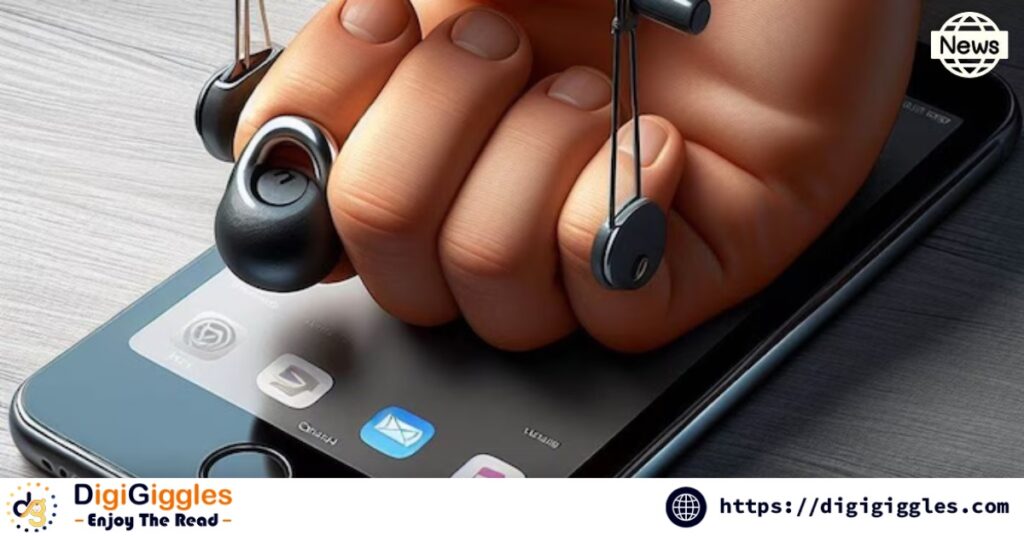
Our gadgets have become extensions of ourselves in the era of smartphones, but are they also unintentionally changing the way our bodies look? A new term that has been making waves on the internet recently is “iPhone finger,” which has many people very concerned. This phrase describes the idea that using smartphones for extended periods of time, especially iPhones, may cause the pinky finger—which is frequently used to support the device during one-handed operation—to get a mark or indentation.
The issue surrounding iPhone users first came to light during a discussion on the podcast “The TJ Show,” where hosts drew attention to what looked to be a noticeable dent or divot on their pinky fingers, which seemed to be the result of using smartphones. Since then, both tech enthusiasts and medical professionals have brought up the subject. Tech enthusiasts, however, are now disproving the phenomenon of a pinky indentation brought on by phone use, which had previously alarmed them. Health professionals assert that “iPhone finger” is not a recognised medical condition.
The Cleveland Clinic’s orthopedic surgeon Dr. Peter Evans recently rejected the notion that “iPhone finger” is a common problem. He explains that rather than being proof of a condition brought on by using a smartphone, the majority of photos claiming to show indentations or gaps on the pinky finger actually just show variations in normal anatomy. Hand surgeon Dr. Michael Geary of Ortho Carolina and occupational therapist April Hibbeler both bolster his opinion by emphasizing that there is no recognised diagnosis for “iPhone finger.”
Even though the idea of “iPhone finger” may no longer exist, experts do advise smartphone users not to completely discount the possible negative effects of excessive smartphone use on their health. Dr. Evans cautions that using a cell phone for extended periods of time can aggravate musculoskeletal disorders and other joint problems. He mentions disorders like Dupuytren’s contracture, which results in the development of thick cords beneath the skin that eventually cause the fingers to contract towards the palm, and clinodactyly, a genetic finger malformation characterized by the bending of the pinky finger towards the ring finger.
While there isn’t any concrete proof connecting smartphone use to disorders like Dupuytren’s contracture or even the widely recognised “iPhone finger,” Dr. Evans emphasizes that there are some medical conditions related to smartphones. One such illness is “smartphone elbow,” also referred to as cubital tunnel syndrome in medical parlance. It is brought on by people frequently bending their elbows past 90 degrees while engaging in activities like texting, which damages nerves and causes symptoms like tingling or numbness in the pinky finger.
Even though there isn’t a specific condition to be unduly concerned about and the worries surrounding “iPhone finger” may have been exaggerated, it’s important to recognise the potential ergonomic risks associated with prolonged smartphone use. Preventive care can help lower the chance of developing any kind of health issue, including musculoskeletal issues.